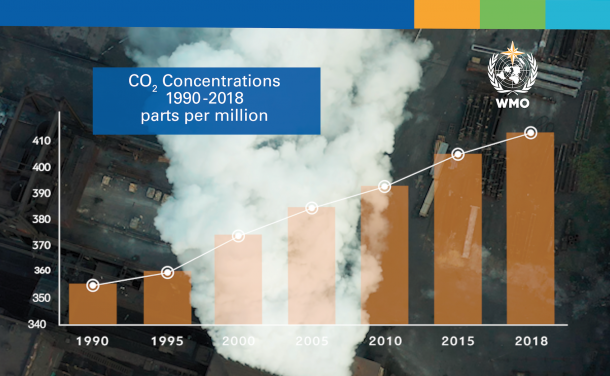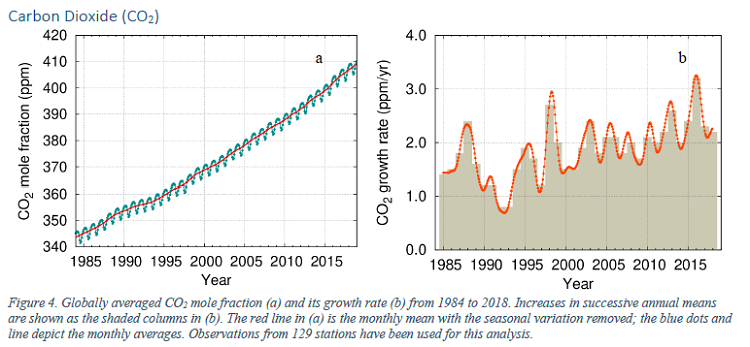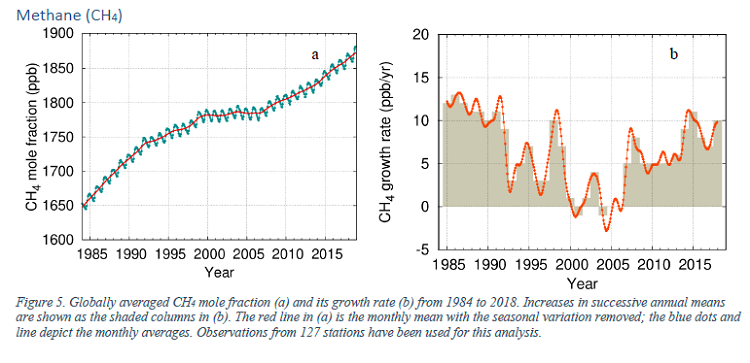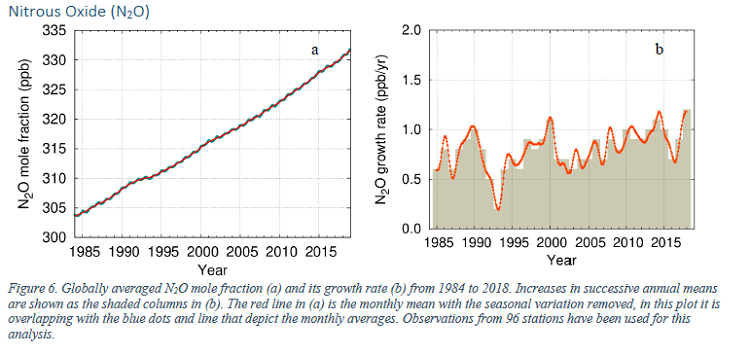Greenhouse Gas Concentrations Reach Yet Another High
Levels of heat-trapping greenhouse gases in the atmosphere have reached another new record high, according to the World Meteorological Organization (WMO)'s latest Greenhouse Gas Bulletin.
Globally averaged concentrations of carbon dioxide (CO2) reached 407.8 parts per million in 2018, up from 405.5 parts per million (ppm) in 2017. The increase in CO2 from 2017 to 2018 was very close to that observed from 2016 to 2017 and just above the average over the last decade.

Concentrations of methane and nitrous oxide also surged by higher amounts than during the past decade, according to observations from the Global Atmosphere Watch network which includes stations in the remote Arctic, mountain areas and tropical islands.
Since 1990, there has been a 43 percent increase in total radiative forcing - the warming effect on the climate - by long-lived greenhouse gases. CO2 accounts for about 80 percent of this, according to figures from the US National Oceanic and Atmospheric Administration quoted in the WMO Bulletin.
“There is no sign of a slowdown, let alone a decline, in greenhouse gases concentration in the atmosphere despite all the commitments under the Paris Agreement on Climate Change,” said WMO Secretary-General Petteri Taalas. “We need to translate the commitments into action and increase the level of ambition for the sake of the future welfare of the mankind.
“It is worth recalling that the last time the Earth experienced a comparable concentration of CO2 was three-five million years ago. Back then, the temperature was 2-3°C warmer, sea level was 10-20 meters higher than now,” said Taalas.
The Bulletin includes a focus on how isotopes confirm the dominant role of fossil fuel combustion in the increase of atmospheric carbon dioxide.
Carbon dioxide

Carbon dioxide is the main long-lived greenhouse gas in the atmosphere related to human activities. Its concentration reached new highs in 2018 of 407.8 ppm, or 147 percent of pre-industrial levels in 1750.
The increase in CO2 from 2017 to 2018 was above the average growth rate over the last decade. The growth rate of CO2 averaged over three consecutive decades (1985–1995, 1995–2005 and 2005–2015) increased from 1.42 ppm/yr to 1.86 ppm/yr and to 2.06 ppm/yr with the highest annual growth rates observed during El Niño events.
Methane

Methane (CH4) is the second most important long-lived greenhouse gas and contributes about 17 percent of radiative forcing. Approximately 40 percent of methane is emitted into the atmosphere by natural sources (e.g., wetlands and termites), and about 60 percent comes from human activities like cattle breeding, rice agriculture, fossil fuel exploitation, landfills and biomass burning.
Atmospheric methane reached a new high of about 1869 parts per billion (ppb) in 2018 and is now 259 percent of the pre-industrial level. For CH4, the increase from 2017 to 2018 was higher than both that observed from 2016 to 2017 and the average over the last decade.
Nitrous Oxide

Nitrous oxide (N2O) is emitted into the atmosphere from both natural (about 60 percent) and anthropogenic sources (approximately 40 percent), including oceans, soil, biomass burning, fertilizer use, and various industrial processes.
Its atmospheric concentration in 2018 was 331.1 parts per billion. This is 123 percent of pre-industrial levels. The increase from 2017 to 2018 was higher than that observed from 2016 to 2017 and the average growth rate over the past 10 years.
Nitrous oxide also plays an important role in the destruction of the stratospheric ozone layer which protects us from the harmful ultraviolet rays of the sun. It accounts for about six percent of radiative forcing by long-lived greenhouse gases.
Emissions Gap
A new UN Environment Programme (UNEP) report released last week warns that unless global greenhouse gas emissions fall by 7.6 percent each year between 2020 and 2030, the world will miss the opportunity to get on track towards the 1.5°C temperature goal of the Paris Agreement.
UNEP’s annual Emissions Gap Report says that even if all current unconditional commitments under the Paris Agreement are implemented, temperatures are expected to rise by 3.2°C, bringing even wider-ranging and more destructive climate impacts. Collective ambition must increase more than five-fold over current levels to deliver the cuts needed over the next decade for the 1.5°C goal.
